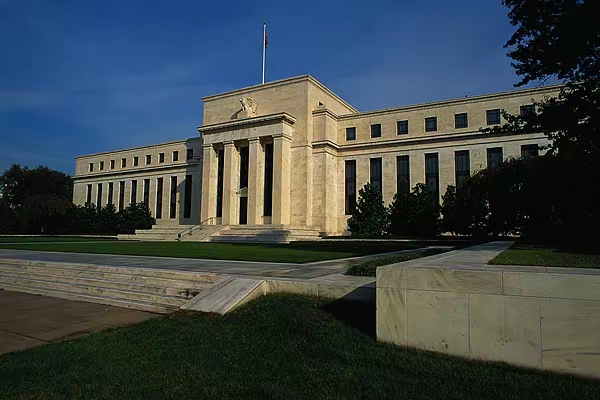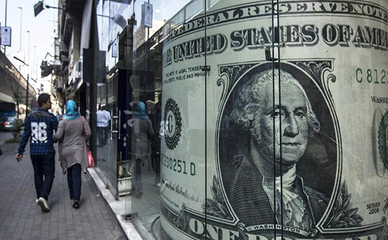
On November 8, 2024, the Federal Reserve announced another interest rate cut within the year, lowering the target range for the federal funds rate to 4.50% -4.75%. This move was like casting a heavy stone on the surface of the global economy, causing ripples.
1、 Inflation factor: the subtle balance behind stability
From past experience, a high inflation rate can erode residents' actual purchasing power and disrupt economic order; If the inflation rate is too low or even falls into deflation, it may lead to a decline in corporate profits, a decrease in investment willingness, and thus drag down the overall economic growth. The Federal Reserve needs to constantly find a balance point in maintaining moderate inflation levels.
2、 Economic Growth Drivers: Stimulus and Sustainability
In the consumer sector, although consumer confidence has rebounded at certain stages, in the long run, the debt burden of residents in a high interest rate environment is relatively heavy, especially the interest payments on long-term debts such as mortgages and car loans, which to some extent squeeze the space for residents' disposable income to be used for consumption. Interest rate cuts can help reduce the cost of debt for residents, thereby unleashing some consumption potential, stimulating further activity in the consumer market, and providing direct impetus for economic growth.
In terms of investment, high interest rates result in high financing costs for enterprises, making it more difficult for some small and medium-sized enterprises to obtain funds for investment activities such as expanding reproduction and technological research and development. Interest rate cuts can lower the financing threshold and costs for enterprises, encourage them to increase investment, promote industrial upgrading and innovation, and ultimately drive long-term economic growth.
From an export perspective, the US dollar exchange rate is to some extent affected by interest rates. Cutting interest rates may lead to a relative weakening of the US dollar, which is a major benefit for US export companies. A weaker US dollar makes US exports more price competitive in the international market, helping to expand export scale, improve trade balance, and drive US economic growth from the external demand side.
3、 Global Economic Situation: Synergy and Competition
On a global scale, the economic growth of many countries and regions is also facing varying degrees of pressure. After experiencing a series of challenges, the pace of recovery in the European economy remains relatively slow; Emerging economies are also impacted by global economic fluctuations, such as exchange rate fluctuations and capital outflows. In this situation, the Federal Reserve's interest rate cuts can to some extent alleviate the tension in the global economy.
4、Financial Market Stability: Regulation and Risk Prevention
The Federal Reserve's interest rate cuts will help alleviate these pressures in the financial markets. By lowering interest rates, bond prices are expected to rebound, attracting capital to flow back into the bond market and stabilizing its operation. For the stock market, interest rate cuts have reduced corporate financing costs, increased corporate profit expectations, and helped drive the stock market up, enhancing investor confidence.
5、 Deep Impact: Reshaping and Uncertainty of the Global Economic Landscape
The impact of the Federal Reserve's interest rate cut this time is far-reaching and will reshape the global economic landscape on multiple levels.
From the perspective of international capital flows, a decrease in US dollar interest rates will prompt a global capital reallocation. On the one hand, emerging economies may usher in more international capital inflows, which will help them accelerate their economic development, but it may also bring exchange rate fluctuations, asset price foam and other problems, which need to strengthen capital supervision. On the other hand, some funds may flow out of the US financial market and into other markets with higher potential returns, which will change the funding structure of the US financial market and have a certain impact on the business operations of US financial institutions.
In terms of exchange rates, a weakening of the US dollar is a highly probable event. This will have an impact on the exchange rates of currencies pegged to the US dollar and major trading partners' currencies. Some countries may face currency appreciation pressure, which is unfavorable for their export industries, but it can reduce import costs for importing companies. The fluctuation of exchange rates will further affect the international trade balance and the layout of the global industrial chain.
In summary, the considerations behind the Federal Reserve's interest rate cut are multifaceted, involving factors such as inflation, economic growth, global economic situation, and financial market stability. Its impact is also complex and far-reaching, with both opportunities and challenges. Countries around the world need to closely monitor the policy dynamics of the Federal Reserve, develop reasonable response strategies based on their own economic conditions, in order to seek stable economic development in the ever-changing global economy.

According to Bloomberg, a recent in-depth interview with Michael Dehal, senior portfolio manager at Raymond James' Dehal Investment Partnership, was released, focusing on the economic development prospects and potential risks of Canada and the United States in 2026.
According to Bloomberg, a recent in-depth interview with Mi…
TikTok Shop, the global e-commerce platform under ByteDance…
As a severe flu outbreak sweeps across the United States, w…
Recently, US Treasury Secretary Mnuchin publicly stated tha…
At the dawn of 2026, the United States launched a military …
From the stiff step when it first debuted in 2022 to demons…